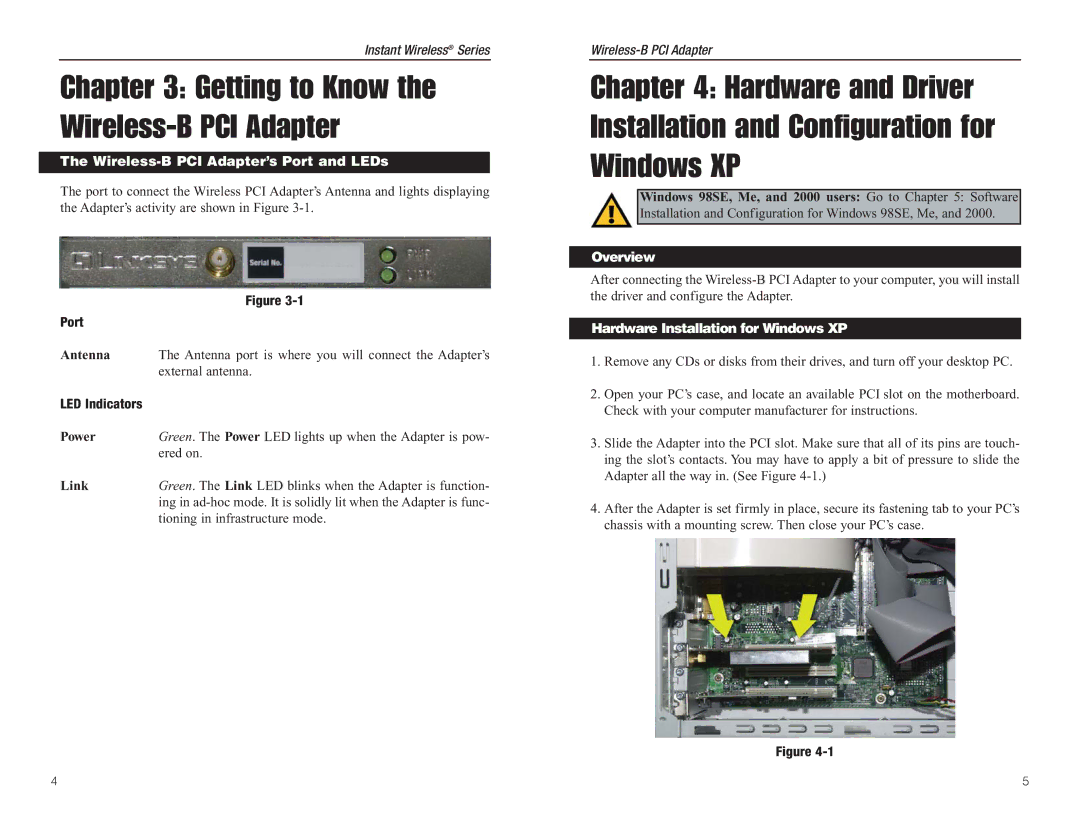WMP11 specifications
The Linksys WMP11 is a wireless network adapter that exemplifies the early 802.11b technology, designed to enhance connectivity in home and small office environments. Launched in the early 2000s, this product was one of the first to facilitate wireless connections for desktop PCs, allowing users to harness the power of wireless networking without the constraints of physical cables.One of the main features of the WMP11 is its compatibility with the 802.11b wireless standard, which offers data transfer rates of up to 11 Mbps. This was a crucial advancement in networking technology at the time, as it enabled users to enjoy a significantly faster internet connection compared to traditional dial-up services. The adapter operates on the 2.4 GHz frequency band, providing a range of approximately 150 feet indoors and up to 300 feet outdoors under optimal conditions.
The WMP11 comes equipped with a PCI interface, making installation straightforward for users with compatible desktop computers. The adapter features Linksys' Plug and Play technology, allowing for easy setup and configuration. With a driver disk provided, users can quickly install the necessary software to get the device up and running. Moreover, it supports WEP security protocols, which, while dated compared to modern standards, offered basic encryption to protect wireless connections during its time.
Additionally, the WMP11 integrates seamlessly with other Linksys networking products, particularly their wireless routers, enabling users to create a robust and comprehensive wireless network. The adapter features a removable antenna, allowing users to replace it with a higher-gain antenna for extended range and improved signal quality.
Despite its age, the Linksys WMP11 laid the groundwork for subsequent generations of wireless technology. It helped usher in a new era of networking, characterized by the convenience and flexibility of wireless connectivity. While it may no longer meet the needs of today’s high-speed internet requirements, the WMP11 holds a nostalgic place in the evolution of wireless networking technology. Users seeking reliable wireless communication during its prime found a dependable solution in the WMP11, making it a noteworthy device in the history of networking.

